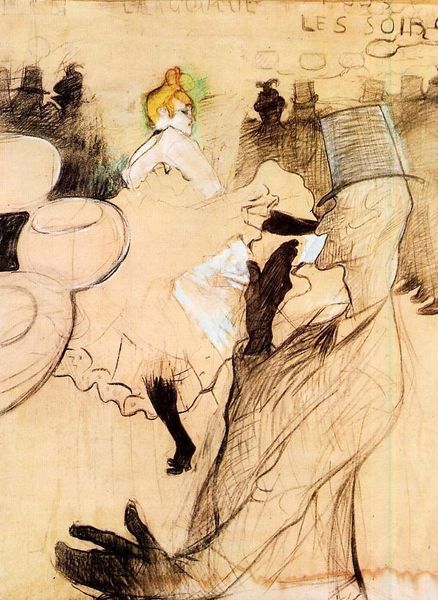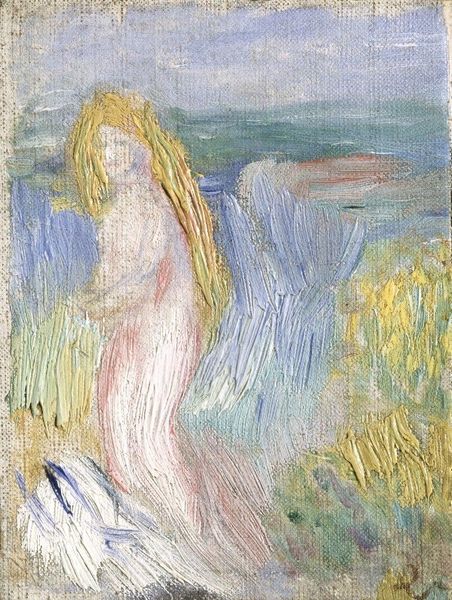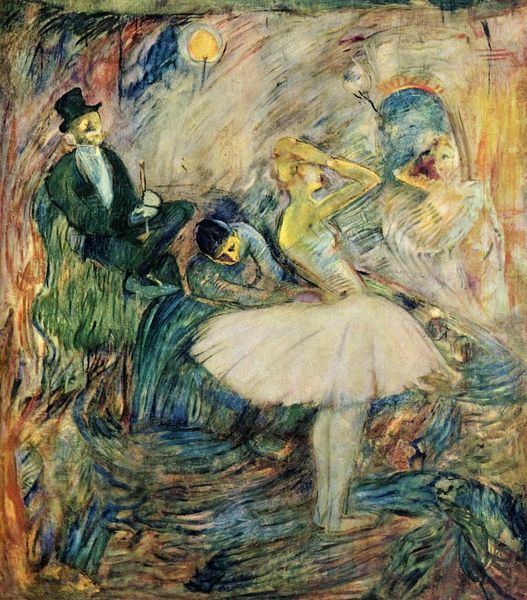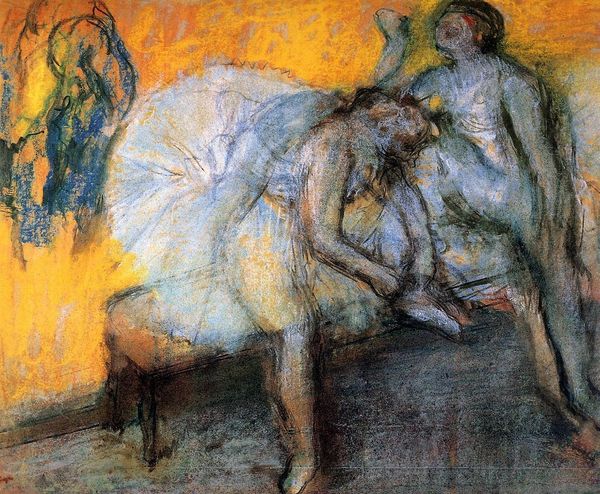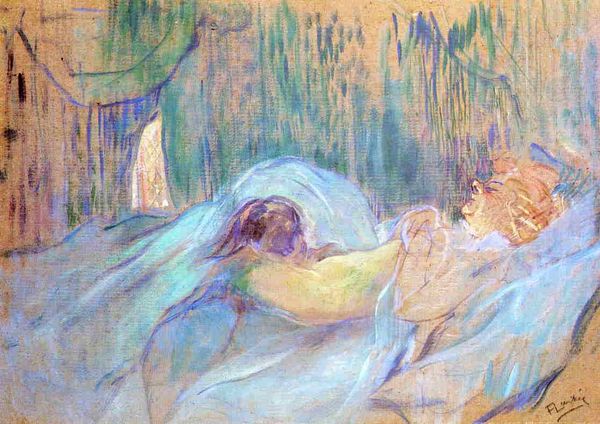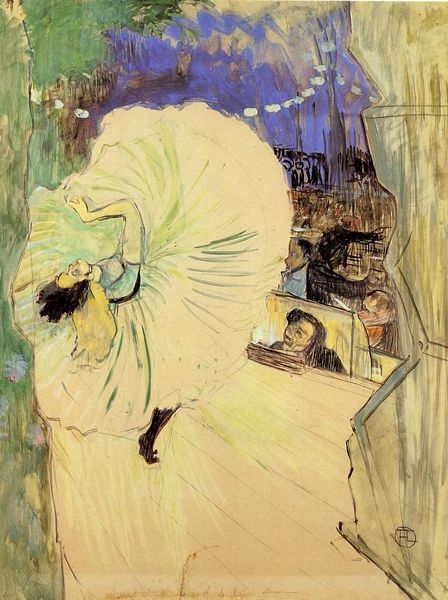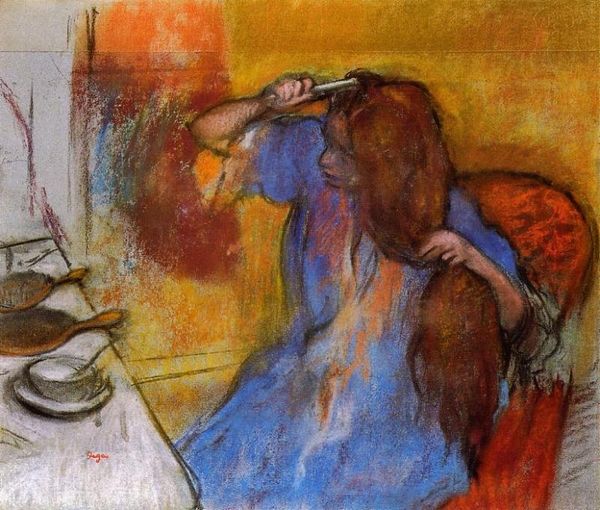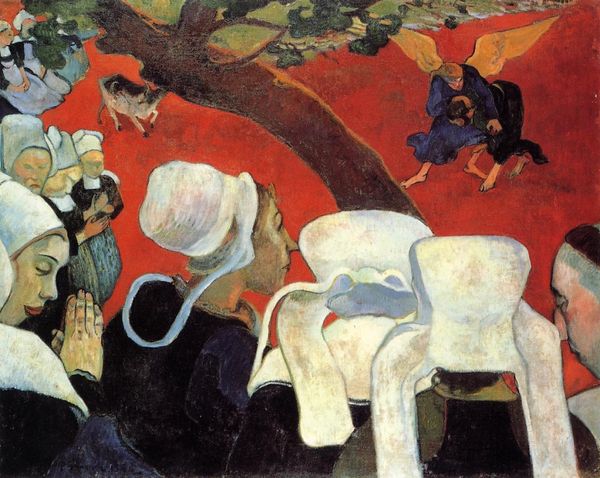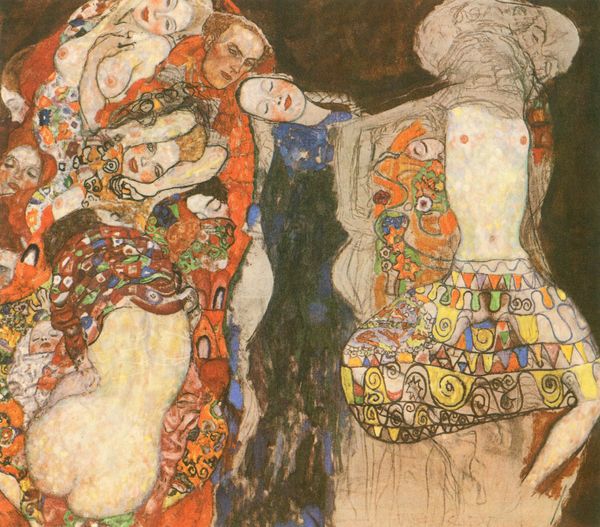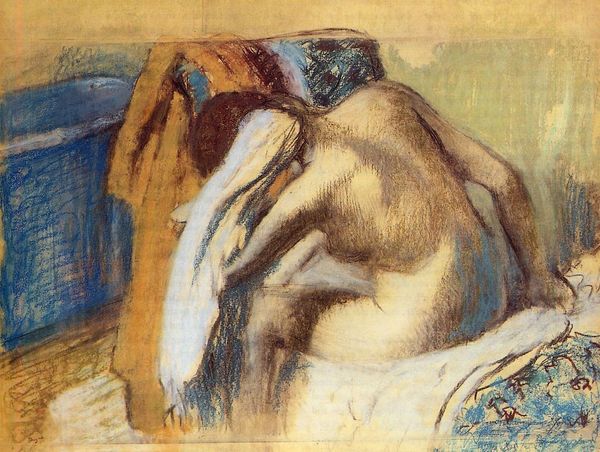
At the Cirque Fernando Rider on a White Horse 1888
0:00
0:00
henridetoulouselautrec
Norton Simon Museum, Pasadena, CA, US
painting, pastel
#
portrait
#
animal
#
painting
#
impressionism
#
oil painting
#
horse
#
genre-painting
#
pastel
#
post-impressionism
Copyright: Public domain
Editor: Here we have Toulouse-Lautrec's "At the Cirque Fernando: Rider on a White Horse," created in 1888, a painting employing oil and pastel. The sketch-like quality and somewhat muted color palette create a nostalgic mood, almost like a faded memory. How do you interpret this work, particularly its depiction of the circus? Curator: The circus, a popular form of entertainment, becomes a stage for more than just spectacle here. It is also a mirror reflecting the changing social dynamics of late 19th-century Paris. What emotions do you get from looking at the female rider? Is it triumphant or does it represent the performative nature of public life? Editor: It strikes me as a bit melancholic, maybe a little lonely even amidst all that potential spectacle you mentioned. It also lacks clear triumphant visual cues that would typically accompany the visual spectacle; this suggests something deeper. Do the colors contribute to that mood? Curator: Exactly! The colors and the ephemeral quality of pastel often evoke memory, transition, even loss. It's not simply documenting the event, is it? Note how Toulouse-Lautrec uses the horse—a long-standing symbol of power and grace, to elevate this female performer. Considering this was made in the late 19th century, could you say she's become a figure representing female agency during that era? Editor: That is thought-provoking. Seeing her in the context of changing social dynamics makes the painting resonate beyond its surface-level subject. Thank you! Curator: Indeed! The painting uses familiar cultural symbols to trigger greater empathy, historical meaning, and contemporary connection.
Comments
No comments
Be the first to comment and join the conversation on the ultimate creative platform.
